Abstract
The interaction of the first component of complement with two serum-sensitive strains of Escherichia coli and Klebsiella pneumoniae was studied. It could be demonstrated that highly purified C1, free of immunoglobulin G and immunoglobulin M, binds to E. coli or K. pneumoniae. C1 binding was also found with specifically absorbed human serum, after incubation of bacteria with normal serum in the presence of ethylenediaminetetraacetate or agammaglobulinemic serum; the number of C1 molecules taken up by the bacteria was not influenced, indicating that C1 binding was independent of naturally occurring antibodies. C1 bound to bacteria was still able to cleave C4, the natural substrate of C1. From these observations, it is concluded that C1 in an enzymatically active state can be bound directly to bacteria independently of antibody.
Full text
PDF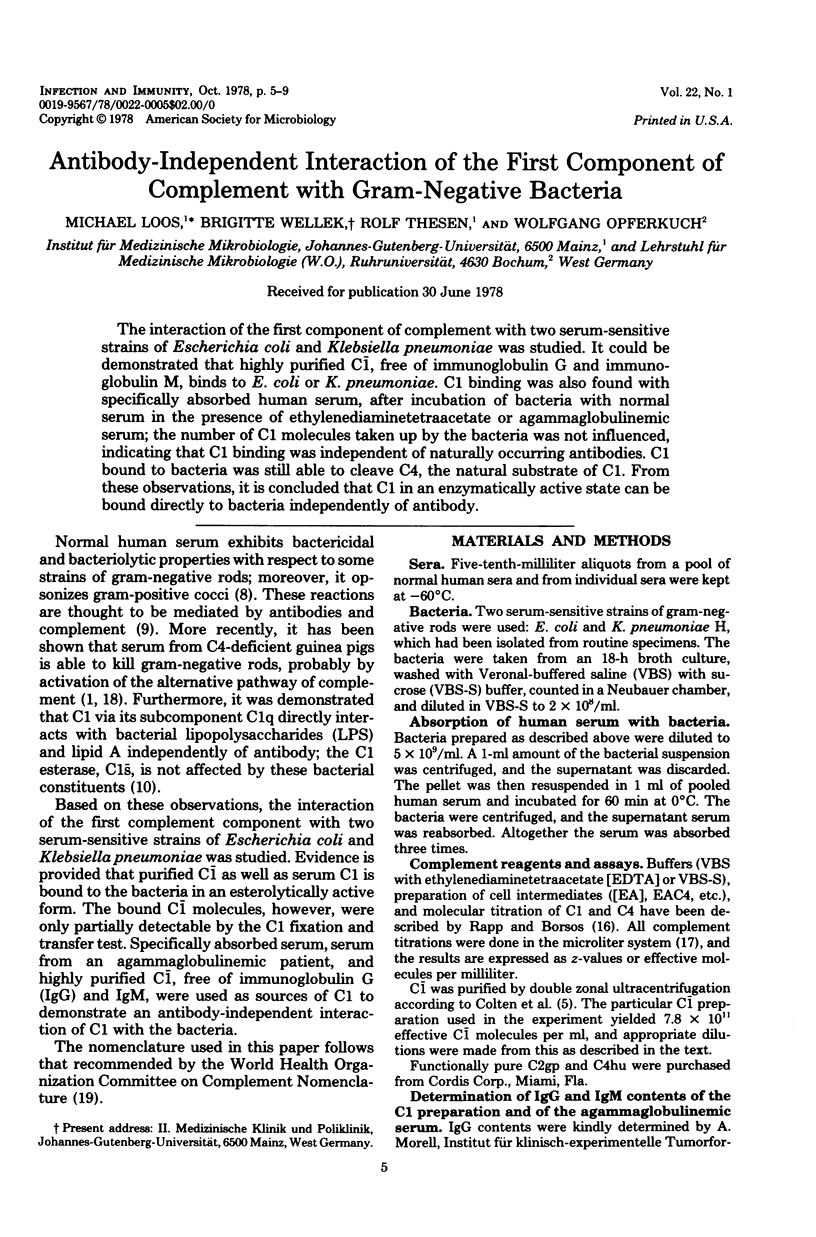
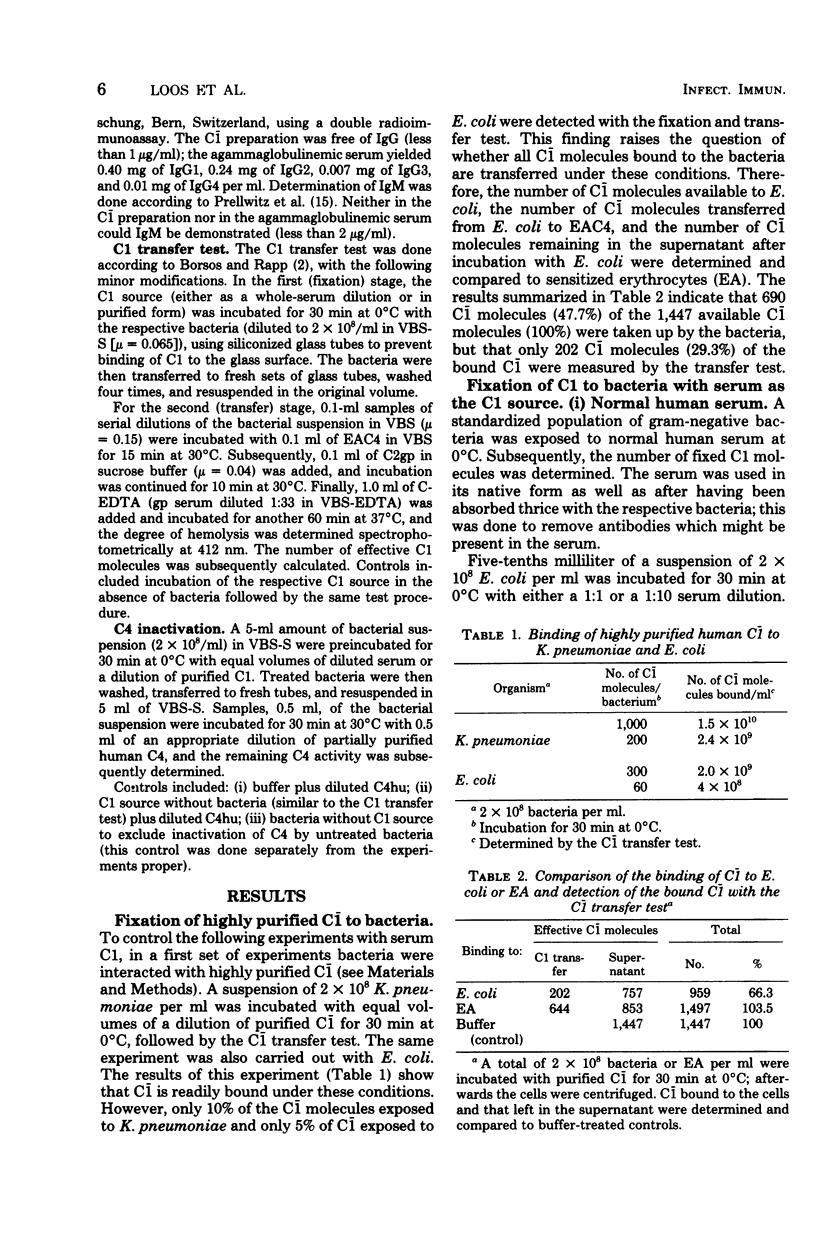
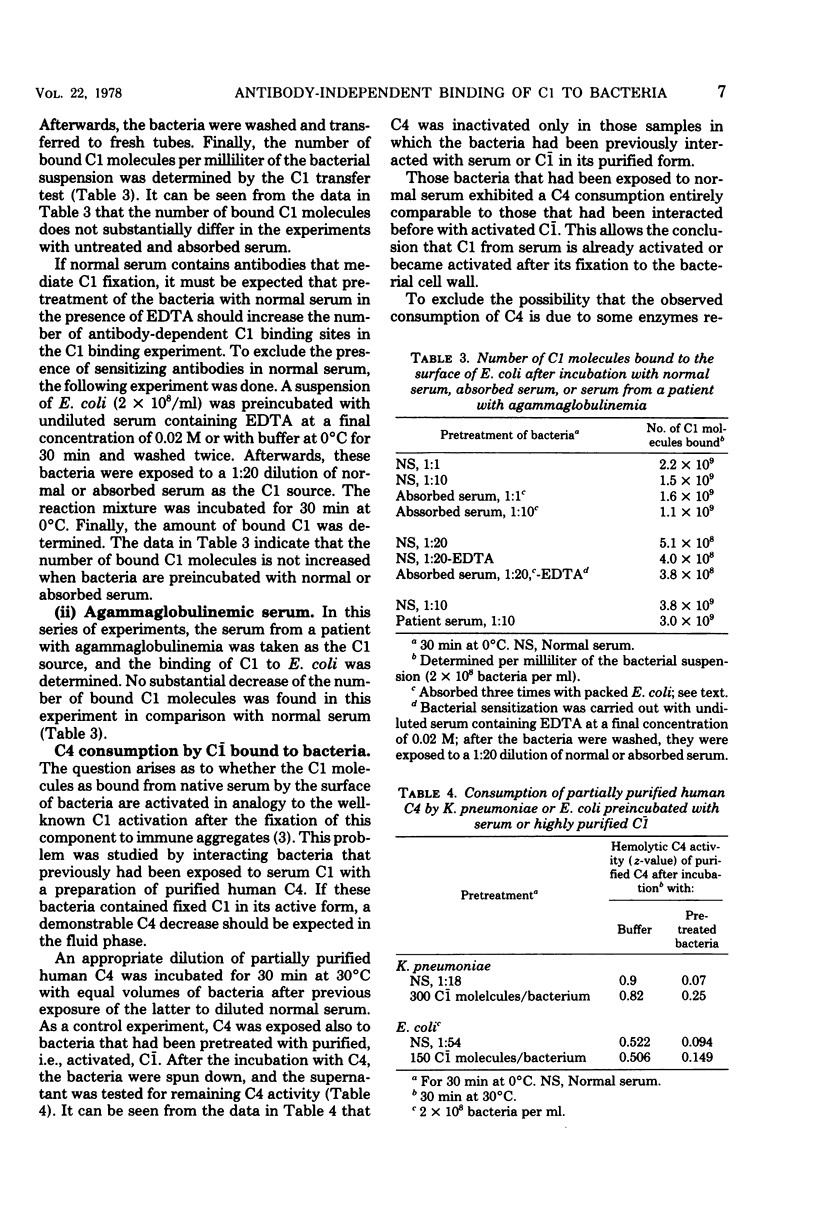
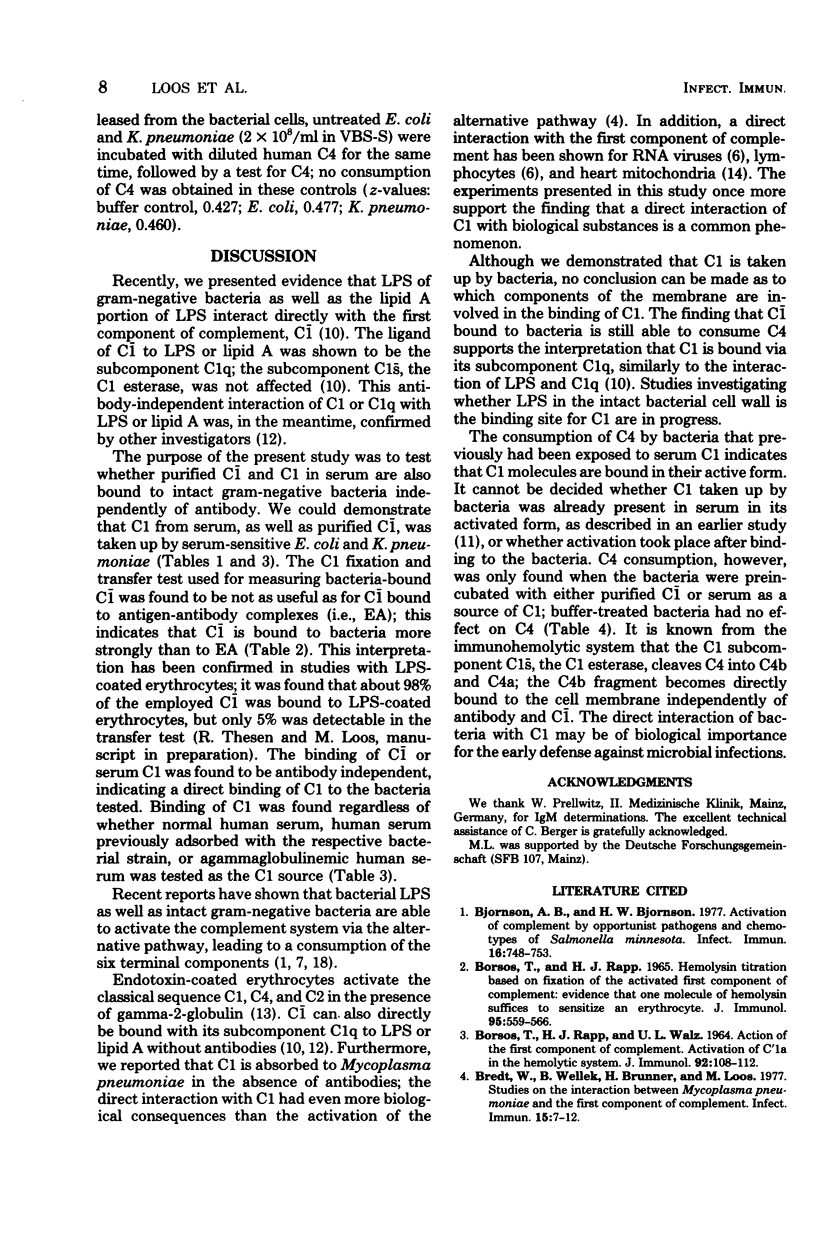
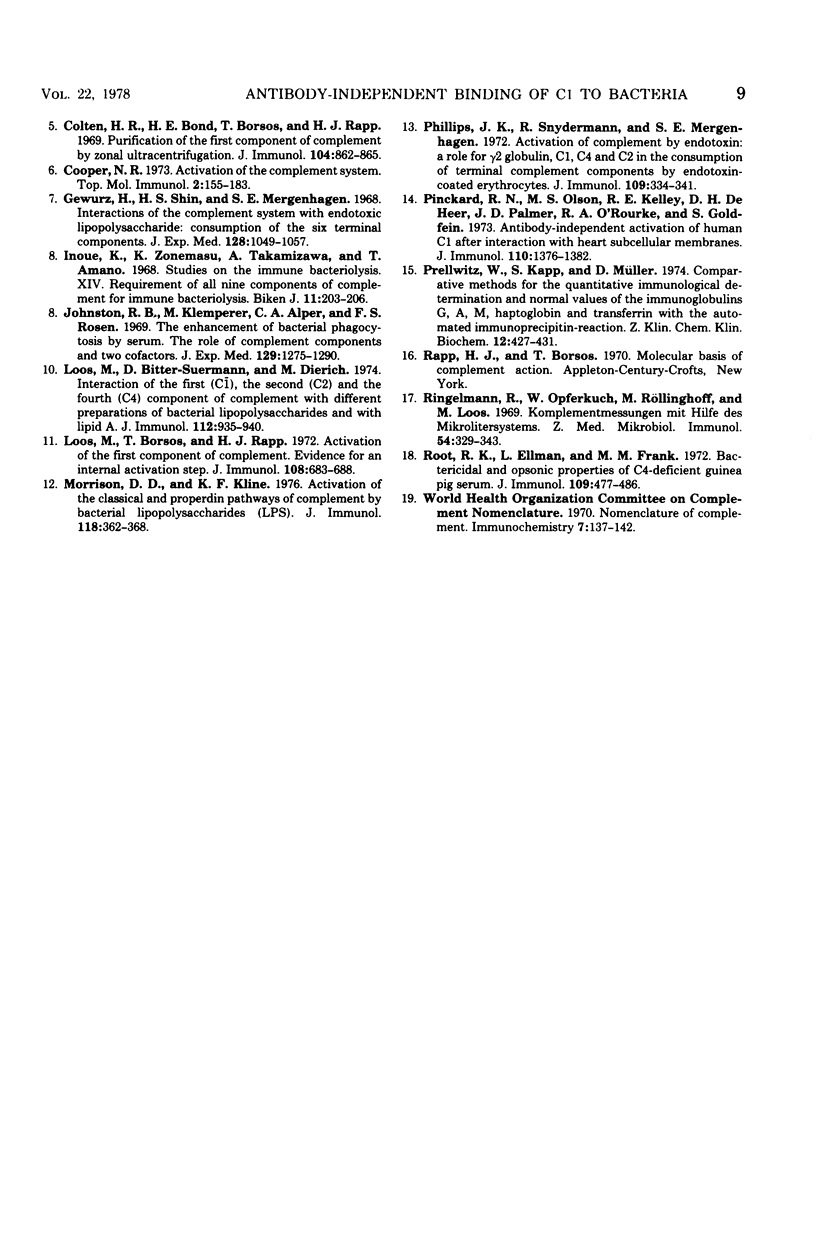
Selected References
These references are in PubMed. This may not be the complete list of references from this article.
- BORSOS T., RAPP H. J., WALZ U. L. ACTION OF THE FIRST COMPONENT OF COMPLEMENT. ACTIVITATION OF C'1 TO C'1A IN THE HEMOLYTIC SYSTEM. J Immunol. 1964 Jan;92:108–117. [PubMed] [Google Scholar]
- Bjornson A. B., Bjornson H. S. Activation of complement by opportunist pathogens and chemotypes of Salmonella minnesota. Infect Immun. 1977 Jun;16(3):748–753. doi: 10.1128/iai.16.3.748-753.1977. [DOI] [PMC free article] [PubMed] [Google Scholar]
- Borsos T., Rapp H. J. Hemolysin titration based on fixation of the activated first component of complement: evidence that one molecule of hemolysin suffices to sensitize an erythrocyte. J Immunol. 1965 Sep;95(3):559–566. [PubMed] [Google Scholar]
- Bredt W., Wellek B., Brunner H., Loos M. Interactions between mycoplasma pneumoniae and the first components of complement. Infect Immun. 1977 Jan;15(1):7–12. doi: 10.1128/iai.15.1.7-12.1977. [DOI] [PMC free article] [PubMed] [Google Scholar]
- Colten H. R., Bond H. E., Borsos T., Rapp H. J. Purification of the first component of complement by zonal ultracentrifugation. J Immunol. 1969 Oct;103(4):862–865. [PubMed] [Google Scholar]
- Cooper N. R. Activation of the complement system. Contemp Top Mol Immunol. 1973;2:155–183. doi: 10.1007/978-1-4684-7773-3_7. [DOI] [PubMed] [Google Scholar]
- Gewurz H., Shin H. S., Mergenhagen S. E. Interactions of the complement system with endotoxic lipopolysaccharide: consumption of each of the six terminal complement components. J Exp Med. 1968 Nov 1;128(5):1049–1057. doi: 10.1084/jem.128.5.1049. [DOI] [PMC free article] [PubMed] [Google Scholar]
- Inoue K., Yonemasu K., Takamizawa A., Amano T. [Studies on the immune bacteriolysis. XIV. Requirement of all nine components of complement for immune bacteriolysis]. Biken J. 1968 Sep;11(3):203–206. [PubMed] [Google Scholar]
- Johnston R. B., Jr, Klemperer M. R., Alper C. A., Rosen F. S. The enhancement of bacterial phagocytosis by serum. The role of complement components and two cofactors. J Exp Med. 1969 Jun 1;129(6):1275–1290. doi: 10.1084/jem.129.6.1275. [DOI] [PMC free article] [PubMed] [Google Scholar]
- Loos M., Bitter-Suermann D., Dierich M. Interaction of the first (C1), the second (C2) and the fourth (C4) component of complement with different preparations of bacterial lipopolysaccharides and with lipid A. J Immunol. 1974 Mar;112(3):935–940. [PubMed] [Google Scholar]
- Loos M., Borsos T., Rapp H. J. Activation of the first component of complement evidence for an internal activation step. J Immunol. 1972 Mar;108(3):683–688. [PubMed] [Google Scholar]
- Morrison D. C., Kline L. F. Activation of the classical and properdin pathways of complement by bacterial lipopolysaccharides (LPS). J Immunol. 1977 Jan;118(1):362–368. [PubMed] [Google Scholar]
- Phillips J. K., Snyderman R., Mergenhagen S. E. Activation of complement by endotoxin: a role for 2 globulin, C1, C4 and C2 in the consumption of terminal complement components by endotoxin-coated erythrocytes. J Immunol. 1972 Aug;109(2):334–341. [PubMed] [Google Scholar]
- Pinckard R. N., Olson M. S., Kelley R. E., DeHeer D. H., Palmer J. D., O'Rourke R. A., Goldfein S. Antibody-independent activation of human C1 after interaction with heart subcellular membranes. J Immunol. 1973 May;110(5):1376–1382. [PubMed] [Google Scholar]
- Ringelmann R., Opferkuch W., Röllinghoff M., Loos M. Komplementmessungen mit Hilfe des Mikrolitersystems. Z Med Mikrobiol Immunol. 1969;154(4):329–343. [PubMed] [Google Scholar]
- Root R. K., Ellman L., Frank M. M. Bactericidal and opsonic properties of C4-deficient guinea pig serum. J Immunol. 1972 Sep;109(3):477–486. [PubMed] [Google Scholar]


